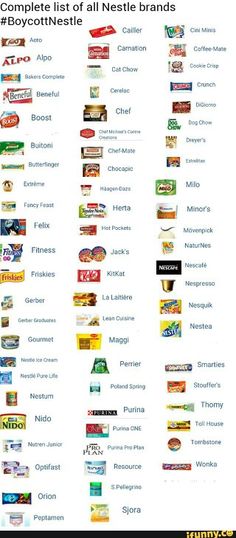

The journal entries for accumulated depreciation are straightforward. These entries involve recording the depreciation for that asset based on the method used. On the other hand, these entries also increase the balance in the accumulated depreciation account.
- It will create an impression that it is obligated to pay the third party, which is not a fact.
- Instead, the company will change the amount of accumulated depreciation recognized each year.
- It is important to note that when an asset is depreciated, there are two accounts that are immediately impacted, the accumulated depreciation and the depreciation expense.
- Depreciation for intangible assets is called amortization, and businesses record accumulated amortization the same as accumulated depreciation.
Under GAAP, the company does not need to retroactively adjust financial statements for changes in estimates. Instead, the company will change the amount of accumulated depreciation recognized each year. Under the declining balance method, depreciation is recorded as a percentage of the asset’s current book value. Because the same percentage is used in every year while the current book value decreases, the amount of depreciation decreases each year. Even though accumulated depreciation will still increase, the amount of accumulated depreciation will decrease each year.
What is Accumulated Depreciation?
The most common methods include straight-line depreciation, declining balance depreciation, and units of production depreciation. Each method has its advantages and disadvantages, and businesses must choose the method that best suits their needs. Accumulated depreciation is the total amount of depreciation that has been recorded for an asset over its life. It is a contra-asset account, which means that it is subtracted from the asset’s cost to determine its net book value. The purpose of accumulated depreciation is to spread the cost of an asset over its useful life, reflecting the asset’s decreasing value over time. Since accelerated depreciation is an accounting method of charging depreciation on assets, the result of it is to book accumulated depreciation.
Incorrectly calculating depreciation can inflate net profits on a balance sheet, as well as distort capital gains or losses when an asset is sold. Accumulated depreciation gives an accurate representation of the value of a company’s assets over time. The total value of all the assets of a company is listed on the balance sheet rather than showing the value of each individual asset. This depreciation expense is taken along with other expenses on the business profit and loss report.As the asset ages, accumulateddepreciation increases and the book value of the car decreases.
Long-term assets that can be depreciated include buildings, machinery, equipment, furniture, and vehicles. Depreciation is an accounting method of allocating the cost of a tangible asset over its useful life to account for declines in value over time. The balance rolls year-over-year, while nominal accounts like depreciation expense are closed out at year end. Under the sum-of-the-years’ digits method, a company strives to record more depreciation earlier in the life of an asset and less in the later years. This is done by adding up the digits of the useful years, then depreciating based on that number of year. Accumulated depreciation is presented on the balance sheet just below the related capital asset line.
To give an accurate record of an asset’s historical cost and depreciation over time. An US corporation ABZ purchases heavy industrial accumulated depreciation on balance sheet machinery for $2,500,000. The company has a useful life of 6 years and a salvage value of $50,000 at the end of its useful life.

Our GST Software helps CAs, tax experts & business to manage returns & invoices in an easy manner. Our Goods & Services Tax course includes tutorial videos, guides and expert assistance to help you in mastering Goods and Services Tax. ClearTax can also help you in getting your business registered for Goods & Services Tax Law. Sub-accounts provide more detail for an account that encompasses many types of transactions. Say that five years ago, you dedicated a room in your home to create a home office. You estimate the furniture’s useful life at 10 years, when it’ll be worth $1,000.
Under the SYD method, the company looks towards recording more depreciation earlier in the life of the asset and less in later years. Here, the digits of the expected years of useful life are summed up then depreciation takes place on the basis of each number of years. For a better understanding, a table will be created to carry out this calculation. There will be an increase in the amount of accumulated depreciation over time as depreciation continues to be charged against the asset. Accumulated depreciation is an accounting method that allows for the gradual deductibility of long-term assets.
Where is accumulated depreciation on the balance sheet?- Video
If the asset is used for production, the expense is listed in the operating expenses area of the income statement. This amount reflects a portion of the acquisition cost of the asset for production purposes. Accumulated depreciation is not considered an asset because assets represent something that will produce economic value to the enterprise over the past. And accumulated depreciation does not produce the organization’s economic value as accumulated depreciation itself shows the credit balance. Hence the value of accumulated depreciation does not represent something that produced economic value, whether in the past or the future. Although, it is encouraged to use different depreciation methods for different assets.

Any asset’s residual value is carrying value or salvage value at the end of the useful life. A business calculates the residual value of assets to estimate what it can receive in exchange for an asset at the end of its useful life. Depreciable assets provide economic benefits for more than one accounting period.
Double-Declining Balance Method
Using the example above, the cost of the equipment is $60,000, its scrap value is $5,000, its useful life is 5 years. The depreciation rate is 20% for each year while the depreciation expense for the first year is $11,000. Financial analysts use accumulated depreciation to calculate the net book value of an asset which is the value of an asset carried on the balance sheet. The net book value is calculated by subtracting the accumulated depreciation from the cost of an asset.
Being a contra asset account, accumulated depreciation is a natural credit balance while the assets that it reduces are natural debit accounts. As earlier stated, the accumulated depreciation account is a contra asset account, which is an asset account with a credit balance. If this derecognition were not completed, a company will gradually build up a large amount of the gross cost of fixed assets and accumulated depreciation on its balance sheet. Accumulate depreciation represents the total amount of the fixed asset’s cost that the company has charged to the income statement so far. Accumulated depreciation on balance sheet.Unlike the usual asset account, a credit to a contra asset account brings about an increase in its value while a debit brings about a decrease in its value.
The company, therefore, records these changes on their balance sheet as the changes are likely to reduce the company’s gross fixed assets. Therefore, accumulated depreciation is neither an asset nor a liability but a contra asset. Instead, companies use accumulated depreciation to reduce the value of their fixed assets before presenting them. Companies may also report this amount in the notes to the financial statements as a part of their fixed asset notes.
While the asset is being used, the total of the amount calculated as depreciation up to a certain point is called accumulated depreciation. For each year or period, the depreciation is recorded to the beginning of the accumulated depreciation balance. The asset’s original cost and the accumulated depreciation is termed as assets carrying value on the balance sheet.
What is the Net Book Value of an Asset?
As the value of land is appreciating; hence land is not a depreciable asset. Generally Accepted Accounting PrinciplesGAAP are standardized guidelines for accounting and financial reporting. Let’s understand this using the same example of $18,000 worth of machinery with a $2,000 residual value and five years of useful life. BuildingPlantFurniture and FixturesEquipmentThe land is not a depreciable asset because it does not fulfill all characteristics of a depreciable asset.
More appropriately, accumulated depreciation can be categorized as a contra-asset account that offsets the asset account’s balance. The periodic allocation or writing off of a depreciable asset’s cost to expense over its useful life is termed depreciation. Hence, the amount of accumulated depreciation at the end of the third year is $3,000 which will be included in the balance sheet as the contra account for the cost of equipment. Likewise, the net book value of the equipment is $2,000 at the end of the third year. Depreciation Expense ChargedDepreciation is a systematic allocation method used to account for the costs of any physical or tangible asset throughout its useful life.
Depreciation expense is the amount that a company’s assets are depreciated for a single period (e.g,, quarter or the year). Accumulated depreciation, on the other hand, is the total amount that a company has depreciated its assets to date. Exxon’s balance statementHowever, it is always best to still list the accumulated deprecation line-by-line for each asset in order to make the most accurate record-keeping. This gives the most accurate representation of the company’s financial health because it details the most valuable assets. Whereas different depreciation methods might be used for accounting purposes and tax returns.
Accumulated Depreciation Formula
The balance sheet provides information to the reader with the value of total assets and shows how the purchase of those assets took place, with either debt or equity. As the value of assets decreases as a result of usage, it is written off on the balance sheet. As previously stated, the accumulated depreciation is the contra account for depreciation, the account that holds the value of asset depreciation over time. Efficiency – By using the income statement in connection with the balance sheet, it’s possible to assess how efficiently a company uses its assets.